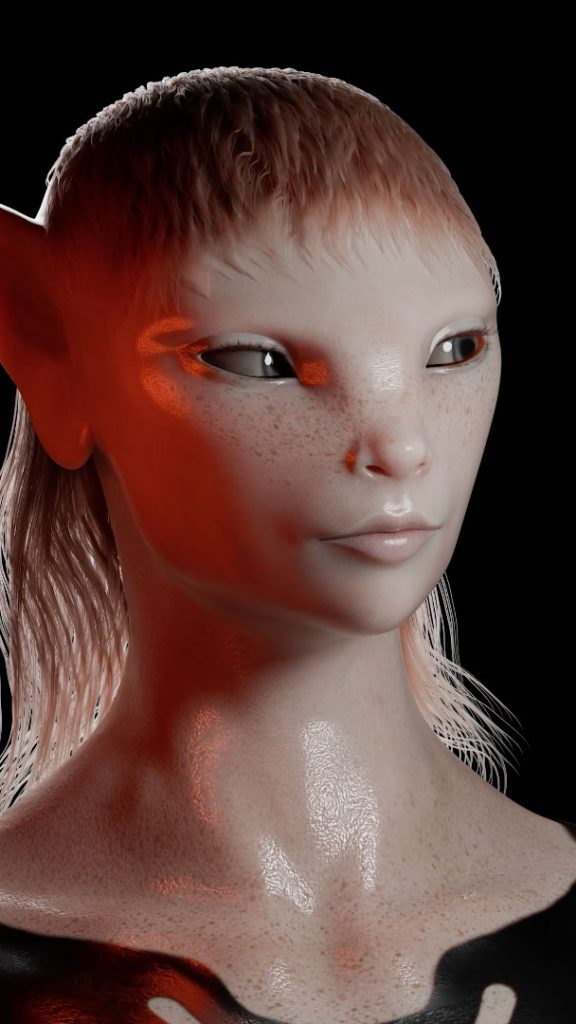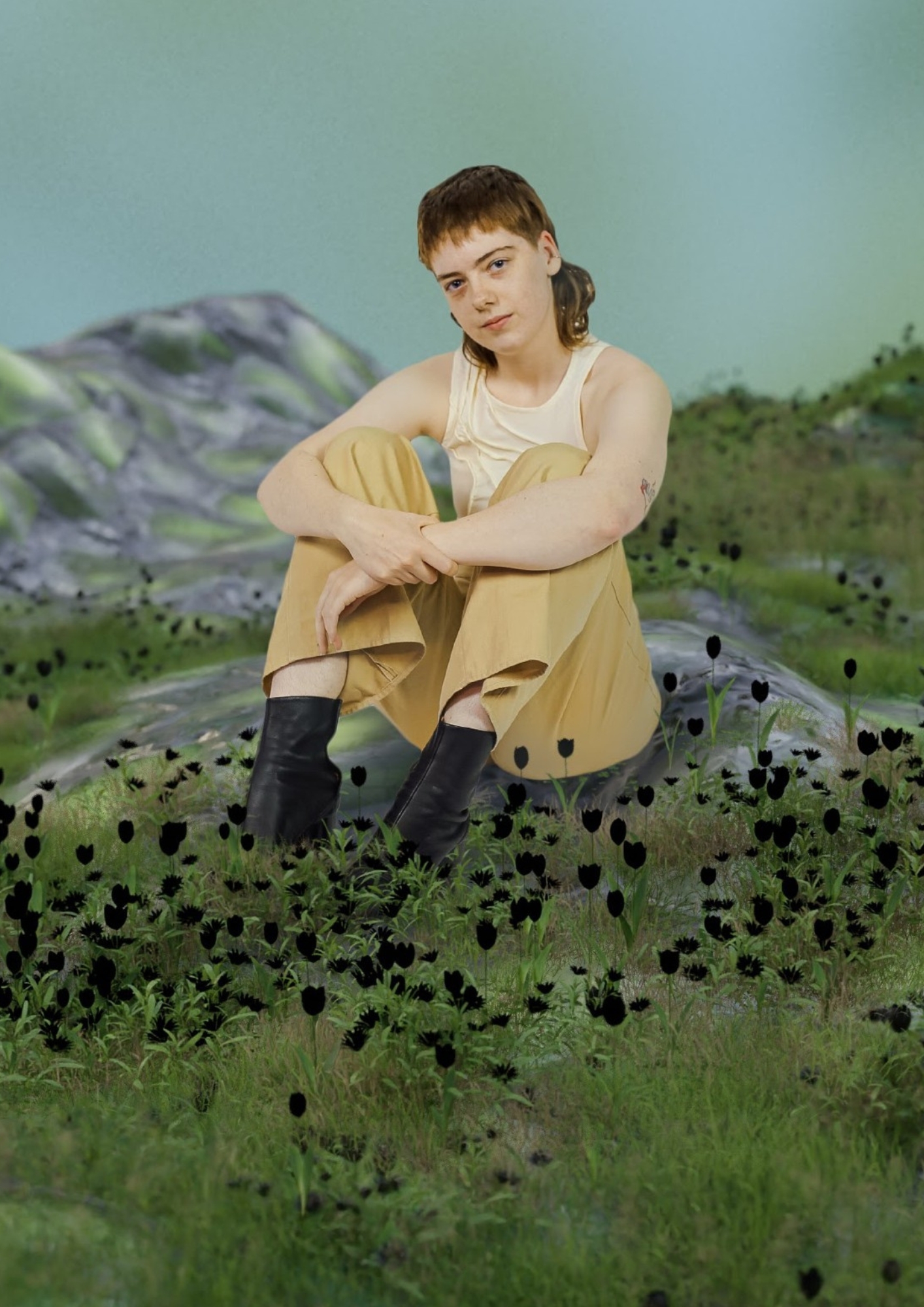HARRIET DAVEY
Generazione Critica: Your practice moves across 3D modeling, animation, and digital portraiture, creating hyper-fluid, hybrid beings that seem to exist beyond traditional definitions of identity. How did you develop your approach to digital aesthetics, and what themes or influences guide your artistic research?
Harriet Davey: Nearly 7 years ago I started to teach myself blender and 3D – mostly out of boredom, partly out of intrigue. Pretty soon I became readily obsessed with virtual figures and bodies. Particularly as soon as I found out that you don’t have to create them totally from scratch. I discovered a second program called Daz 3D. Using sliders, morphs, and some presets you have the same feeling as creating a character in a videogame (always my favourite part of an RPG), with almost unlimited options. I dove into this world, utilising only hobbyist softwares and non-industry standard workflows and practices, twisting them around to create pieces that can pass for, or appear at such a standard.
GC: Your portraits often depict alien-like figures that blur the boundaries between human and non-human, artificial and organic. What draws you to this aesthetic, and how do you see these beings in relation to contemporary ideas of self-representation and identity?
HD: All of my figures are an extension of the self. A form of drag, if you will. A playground to explore a physical appearance and identity that I could never dream of in the flesh. There is something special about imparting various attributes to different characters from myself, and having total control over their movement, animation, placing, and environment. The figures come first, their environments always follow, informed by the character that inhabits it. I would not say there are many overt references to draw from, perhaps the closest is using hand drawn versions of patterns from nature and skin. But improvised and drawn from memory usually instead of direct reference.
GC: Many of your works seem to challenge established standards of beauty and bodily form, presenting fluid, shape-shifting identities. Do you see your digital beings as speculative visions of the future, or do they rather reflect something deeply present in today’s visual culture?
HD: I would not necessarily claim they are the future, but they are a possible future. For now they remain a truth that sits in the present; in direct reference to current lived experiences of gender and expression. Honestly, I think the real future is maybe rather bleaker and a digression of the current state of the world unless we are careful.

“3D Animation Showreel”, Harriet Davey, 2023-2024, video still. Courtesy the artist ©
GC: The use of digital textures, metallic skins, and iridescent surfaces in your portraits gives them a hyperreal yet unreal presence. How do you think these material choices affect the way viewers relate to your work? Do they enhance a sense of otherness or…?
HD: When I was just starting out and lacked the skills I have now over lighting and rendering, making things shiny and slippery looking was an almost cheat to make the work feel more authentic, or realistic. I think it’s more a habit I stuck with, refusing to evolve part of the process. My skin shader has not been updated for many years now. I like it this way. I can avoid the dreaded uncanny valley because the skin does not try to imitate real human skin, and instead exists with a feeling of softness, instead of the usual uneasy waxiness that I see in a lot of CG skin.
GC: In a focus article by Ruby Boddington for Is Nice That (October 2020) it is mentioned that you oftentimes has addressed your practice as The Real Unreal, which explores identity through digital avatars, where you take on the role of a photographer ‘discovering’ and ‘casting’ these hybrid beings. One of these figures, Whowle, is a virtual version of yourself, merging personal features with an otherworldly aesthetic. How does Whowle function as an extension of your identity, and what does this process reveal about the fluid nature of self-representation in digital spaces? Can you further elaborate on The Real Unreal?
HD: Whowle as a name has been my online persona since my early teenage years. My gamer tag, my alter ego. After spending so many years making avatars for and of other people, and celebrities, I decided to set-out to make my own avatar, for myself. They feature some of my features; scanned skin and tattoo textures, eyes. And many aspects are similar, but almost as seeing myself through a distorted lens. I get to play queer fluid dress up dolls with them. I would love to make a game, to address the lore of the worlds I have been building around Whowle, so that other players can have a glimpse into their life.
GC: Digital technologies and AI are shaping the way we perceive identity and the body, sometimes reinforcing existing ideals and at other times creating entirely new aesthetics. Where do you see your practice positioned in this ongoing shift, and how do you think digital tools are influencing the way we construct and experience identity today?
HD: It’s a hard one. And something that occupies a lot of my thoughts recently. I put a lot of my thoughts down into writing recently, and shared with a friend. I’m happy for you to use any of these thoughts as I think the response is the same as I would share here.

“3D Animation Showreel”, Harriet Davey, 2023-2024, video still. Courtesy the artist ©

